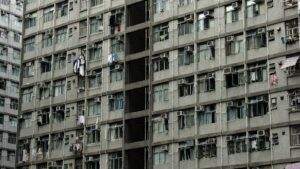Reduced government funding risks undermining homelessness prevention work in the capital, London boroughs have warned amid growing cost-of-living pressures.
While welcoming the government’s success on reducing rough sleeping for the third year in a row, the cross-party group London Councils is calling for a similar focus to be applied to wider forms of homelessness.
The government recently confirmed that funding provision to local authorities in England for Discretionary Housing Payments (DHPs) in 2022/23 would reduce from £140m to £100m.
London Councils highlights that London’s allocation has fallen from £37m to £26.7m.
DHPs are available from councils for residents struggling to pay their rent and at risk of homelessness. Although the chancellor’s recent Spring Statement boosted the Household Support Fund for councils to help the most vulnerable residents meet their everyday living costs, there was no targeted measure on homelessness prevention.
Boroughs describe DHPs as a ‘vital’ homelessness prevention tool. The latest available figures show that in 2020 boroughs issued over 32,000 DHPs to help hard-pressed Londoners meet their housing costs. Government data also reveals a growing need, with the number of universal credit claimants in London who do not receive enough support to cover their rent increasing by 180% to more than 133,000 between August 2019 and 2021.
DHPs are considered so important that boroughs top up the government funding with their own local resources. From 2013 to 2021, London local authorities collectively spent an additional £17.6m on DHPs in addition to the government funding they received.
However, budget pressures mean boroughs will struggle to maintain DHP provision at the same levels, with worrying implications for homelessness prevention in the capital.

Cllr Muhammed Butt, London Councils’ Executive Member for Welfare, Empowerment & Inclusion, said: ‘We’re facing the most severe homelessness crisis in the country and boroughs are deeply concerned by the reduced funding available for discretionary housing payments.
‘These payments are boroughs’ main homelessness prevention tool. They can be vital for helping low-income households pay their rent and keep a roof over their heads. With so many Londoners struggling to make ends meet, we’re worried what will happen if fewer discretionary housing payments are available.
‘We know the government shares our ambitions on tackling homelessness. Good progress is being made on reducing rough sleeping – but we need the same focus and funding boost for preventing other forms of homelessness. A staggering number of Londoners already live in temporary accommodation and we can’t afford for these numbers to go up even further.’
Recent research shows 80% of Londoners have seen an increase in their cost of living over the past six months, with 13% going without essentials or relying on debt because they struggle to make ends meet.
Rather than living on the streets, the vast majority of homeless Londoners are placed in temporary accommodation arranged by their local borough. London Councils estimates that 155,000 Londoners live in temporary accommodation – including 86,000 children. As it is not so visible, this is often referred to as ‘hidden homelessness’.
London accounts for two-thirds of England’s homelessness total and boroughs spend almost £1bn every year on homelessness services, the majority of which goes towards temporary accommodation costs.
London Councils will seek to work with ministers in addressing this challenge. Top priorities include improving the welfare system’s ability to help struggling households meet their housing costs – such as through ending the five-week wait for universal credit payments to begin – and increased funding to tackle London’s chronic shortage of social housing.
In related news, 65% of homeless Londoners in temporary accommodation are women, figures reveal.
Photo by Jon Tyson


















Leave a Reply